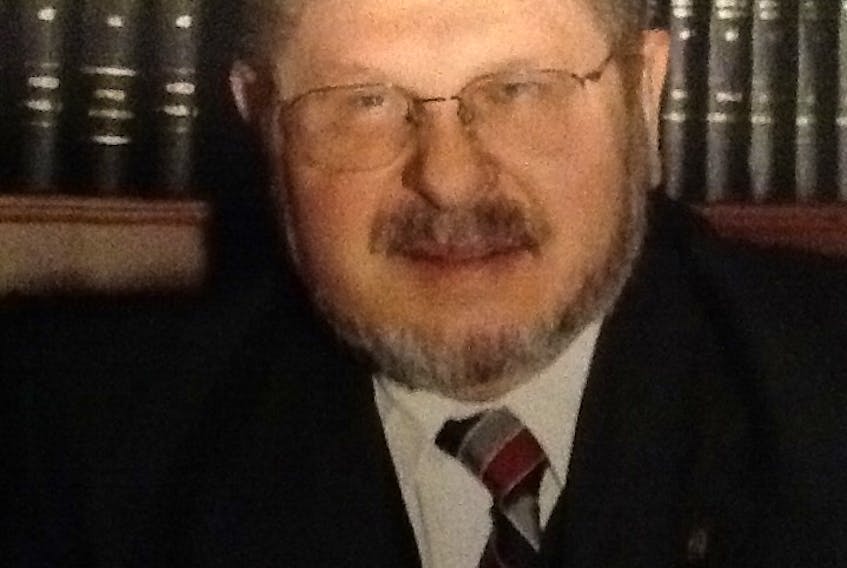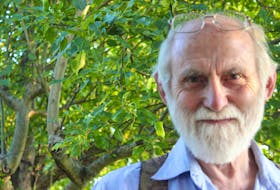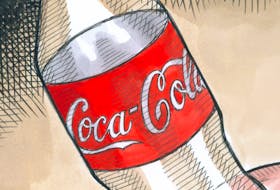As I stated in Part 1, I chose this title as an attention getter but don’t really like it because of its negative connotation.
I believe that the prisoner-of-war camp in Amherst was by and large a benign, maybe even beneficial experience. The prisoners caused hardly any trouble and they were put to work and brought about all kinds of improvements such as at Dickey Park and at the Nappan Experimental Farm.
Also, there was a lot of talent and creativity among the young men held captive, with many examples of their products still in the community.
In any event, our member of parliament is to be commended for arranging some events that will commemorate the 100th anniversary of the closing of the camp in 1919.
He contacted the German Embassy in Ottawa which knew nothing of this topic. They really became interested when they were told that 13 German nationals had been buried in the Amherst Cemetery and that there was a monument there with 11 names on it.
They sent a delegation to Amherst on March 26, which included three members of a German Air Force military band which happens to be coming to our province this summer as guest performers at the Nova Scotia International Tattoo.
The group first visited at the town hall where they were received by Deputy Mayor Sheila Christie. I was asked to join the group by Bill Casey in case some interpreting or other liaison needed to be done.
Actually, the group leader was fluent in English and the musicians knew some English as well. Next, we visited Ray Coulson and the Nova Scotia Highlanders Regimental Museum. The delegates were most Interested in all the exhibits, especially artifacts of German origin from the First and Second World War.
At the armouries, plans for the observances on July 2 were discussed. When we mentioned that there might be hundreds of visitors to see a display of prison artifacts and that a concert from the band would be appreciated they gradually warmed up to that idea.
In fact, after Mr. Casey agreed that an appropriate stage could be provided, they thought that maybe the whole band could come and put on a performance - that’s over 40 musicians.
All of that will happen on July 2.
Among the prison treasures Coulson has in his museum are two musical instruments made by the German prisoners: a cello and a violin. It may be possible to have these two instruments fixed up a little so that they can be played as part of the concert or as a special feature - having them played for the first time in 100 years.
The Cumberland Museum on Church Street also contains many prison camp products, as well as a collection of photographs.
The group spent quite a bit of time there, getting more and more excited about being part of the July 2 events.
Next came the visit to the cemetery. There they discussed the playing of a musical tribute to the 13 soldiers who died here and were buried in individual graves with individual markers. We believe that it was in 1970 when the German War Graves commission had the remains exhumed and reburied in the Woodland cemetery in Kitchener, Ontario. A new stone was erected bearing eleven names.
It is not known why two names were omitted. We recently learned that the original grave markers were placed in the spaces from where the remains had been removed and covered over. That explains why there is a fair amount of empty space around the one monument that is there. More information about the commemoration of the 100 years since the closing of the prisoner of war internment camp will be forthcoming from Mr. Casey’s office. There will be an appeal for anyone who owns or knows about a prison-made artifact to loan it to the exhibit on July 2.
A website will be established in the hope that it will reach some people in Germany and the Ukraine (and in Canada) whose ancestors spent time at that facility in Amherst.
I know from my own experience (I had two uncles, who were prisoners of war, interned in southern Alberta. They loved to talk about their experiences and they were all positive) that if anyone had a grandfather or great grandfather who served out the rest of the war in Amherst, they would know about it.
I fully expect that Bill’s office will get responses from across the Atlantic, or even from people in Canada. Some of the German prisoners stayed in Canada and all of the Ukrainians, who were imprisoned here, were already residents of this country and their ancestors would know and remember that.
The actual date when the camp closed was Sept. 27, 1919. That means that the July 2 observances and events are a bit early. In September there would be no big military band available to play an enjoyable free concert in the Amherst Armouries. Surely, that makes it okay. Mark it on your calendar.
Morris Haugg is a retired Amherst lawyer and a member of the Amherst News Community Editorial Panel









